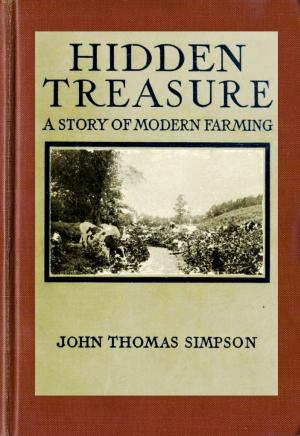How to Save Your Farm 1
Nonfiction, Science & Nature, Science, Earth Sciences, Nature, Environment, Ecology, Technology, Agriculture & Animal Husbandry| Author: | Midwest Journal Press, Robert H. Elliot, Dr. Robert C. Worstell | ISBN: | 9781312924444 |
| Publisher: | Midwest Journal Press | Publication: | February 28, 2015 |
| Imprint: | Language: | English |
| Author: | Midwest Journal Press, Robert H. Elliot, Dr. Robert C. Worstell |
| ISBN: | 9781312924444 |
| Publisher: | Midwest Journal Press |
| Publication: | February 28, 2015 |
| Imprint: | |
| Language: | English |
In our farm, we listened to the old farmers, who told of simple solutions. Instead of feeding the cattle over-winter in a lot and turning them out in the spring (and having to scrape and dispose of several months of piled-high manure) simply taking the bales out to the poorest sections of land and feeding them there, letting the cattle spread their own manure and mix it thoroughly into the soil by hoof action.
Over a few years, you start to develop topsoil where there had been none or very little. Red clay ground turned black with humus. Cattle help the soil capture carbon and sequester it back into the soil.
More interestingly, it's cheaper than having to fire up a tractor in the middle of winter and fight the muddy ruts to bring more food to your cattle. Instead, the food is already available in the field - and you simply allow them to have a few more bales as they are ready for them. No cost other than setting them out on a nice fall day across former crop ground which has been now turned to pasture.
The name for this type of farming is called Regenerative. It's not just sustainable, but more - it actually can restore the soil to a health and quality it's not seen in decades, if not centuries.
What is most interesting is that this type of farming was well written up before most of our University Professors and corporate executives were even born. But it's not being pushed, or even researched these "modern" days.
So I brought these books back to light so they could be studied. You now have one of them in your hand.
(From the Forward)
- - - -
In our farm, we listened to the old farmers, who told of simple solutions. Instead of feeding the cattle over-winter in a lot and turning them out in the spring (and having to scrape and dispose of several months of piled-high manure) simply taking the bales out to the poorest sections of land and feeding them there, letting the cattle spread their own manure and mix it thoroughly into the soil by hoof action.
The name for this type of farming is called Regenerative. It's not just sustainable, but more - it actually can restore the soil to a health and quality it's not seen in decades, if not centuries.
What is most interesting is that this type of farming was well written up before most of our University Professors and corporate executives were even born. But it's not being pushed, or even researched these "modern" days.
So I brought these books back to light so they could be studied. You now have one of them in your hand.
In our farm, we listened to the old farmers, who told of simple solutions. Instead of feeding the cattle over-winter in a lot and turning them out in the spring (and having to scrape and dispose of several months of piled-high manure) simply taking the bales out to the poorest sections of land and feeding them there, letting the cattle spread their own manure and mix it thoroughly into the soil by hoof action.
Over a few years, you start to develop topsoil where there had been none or very little. Red clay ground turned black with humus. Cattle help the soil capture carbon and sequester it back into the soil.
More interestingly, it's cheaper than having to fire up a tractor in the middle of winter and fight the muddy ruts to bring more food to your cattle. Instead, the food is already available in the field - and you simply allow them to have a few more bales as they are ready for them. No cost other than setting them out on a nice fall day across former crop ground which has been now turned to pasture.
The name for this type of farming is called Regenerative. It's not just sustainable, but more - it actually can restore the soil to a health and quality it's not seen in decades, if not centuries.
What is most interesting is that this type of farming was well written up before most of our University Professors and corporate executives were even born. But it's not being pushed, or even researched these "modern" days.
So I brought these books back to light so they could be studied. You now have one of them in your hand.
(From the Forward)
- - - -
In our farm, we listened to the old farmers, who told of simple solutions. Instead of feeding the cattle over-winter in a lot and turning them out in the spring (and having to scrape and dispose of several months of piled-high manure) simply taking the bales out to the poorest sections of land and feeding them there, letting the cattle spread their own manure and mix it thoroughly into the soil by hoof action.
The name for this type of farming is called Regenerative. It's not just sustainable, but more - it actually can restore the soil to a health and quality it's not seen in decades, if not centuries.
What is most interesting is that this type of farming was well written up before most of our University Professors and corporate executives were even born. But it's not being pushed, or even researched these "modern" days.
So I brought these books back to light so they could be studied. You now have one of them in your hand.















